
The Cinema and the Gallery – When worlds collide?
You might be ready for the weird and wonderful world of the film festival, but are you ready for film at its absolute weirdest, flouting all cinematic conventions and ‘hung out’ in a gallery? Are you ready for Declan Clarke’s Geist Trilogy?
You love film. Of course you do! Why else would you be reading a magazine like Montages? But as the Bee Gees might have put it, ‘How deep is your love?’ What about the films that are really out there, and by ‘out there’ I mean as far from the movie-theatre or computer-screen as you can go. I’m talking about the strangest films housed in their strangest and most unpromising setting, that is, the echoing halls and walls of the neighbourhood art-gallery, like Declan Clarke’s Geist Trilogy as it recently appeared in my very own Tromsø Kunstforening.
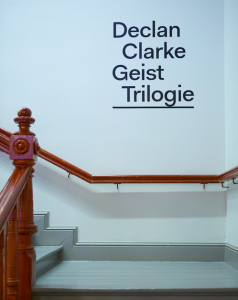 There is hope perhaps. Most likely, you’ve taken one road less travelled already. You’ve strayed from the popular comfort-zone of the typical blockbuster, and delved into that art-movie ‘little shop of horrors’ provided by your typical film-festival. So maybe you could venture even further off the beaten track, to the place that pushes the limits of the medium like no other? I believe it’s worth the effort. It may even give us a better idea of what film is – and what it’s really for.
There is hope perhaps. Most likely, you’ve taken one road less travelled already. You’ve strayed from the popular comfort-zone of the typical blockbuster, and delved into that art-movie ‘little shop of horrors’ provided by your typical film-festival. So maybe you could venture even further off the beaten track, to the place that pushes the limits of the medium like no other? I believe it’s worth the effort. It may even give us a better idea of what film is – and what it’s really for.
It wasn’t too far to go (literally speaking) in Tromsø in January. For in the middle of the annual film-festival came, not so coincidentally, the official opening of Clarke’s exhibition, as the notional spools were set into ‘perpetual’ motion. So it was that another kind of film slipped into our peripheral vision at this year’s TIFF. And there it proceeded to tick away in a most un-cinematic way, its repetitive sequences oblivious to our presence, anchored to the spot in their monumental indifference. Months slipped by. The fleeting festival amusements ran their course and receded from our collective memory, but still the ‘spools’ kept ‘spinning.’
It was in fact three films, as the name implies, running concurrently as well as continuously: We Are Not Like Them from 2013 and The Most Cruel of All Goddesses and Wreckage in May, both from 2015. The gallery-goer could browse them like a buffet-table, landing at random in each film-scape, and then moving on for another sample as whim or circumstance dictate. The gallery nevertheless manages to dictate the terms of that first encounter…
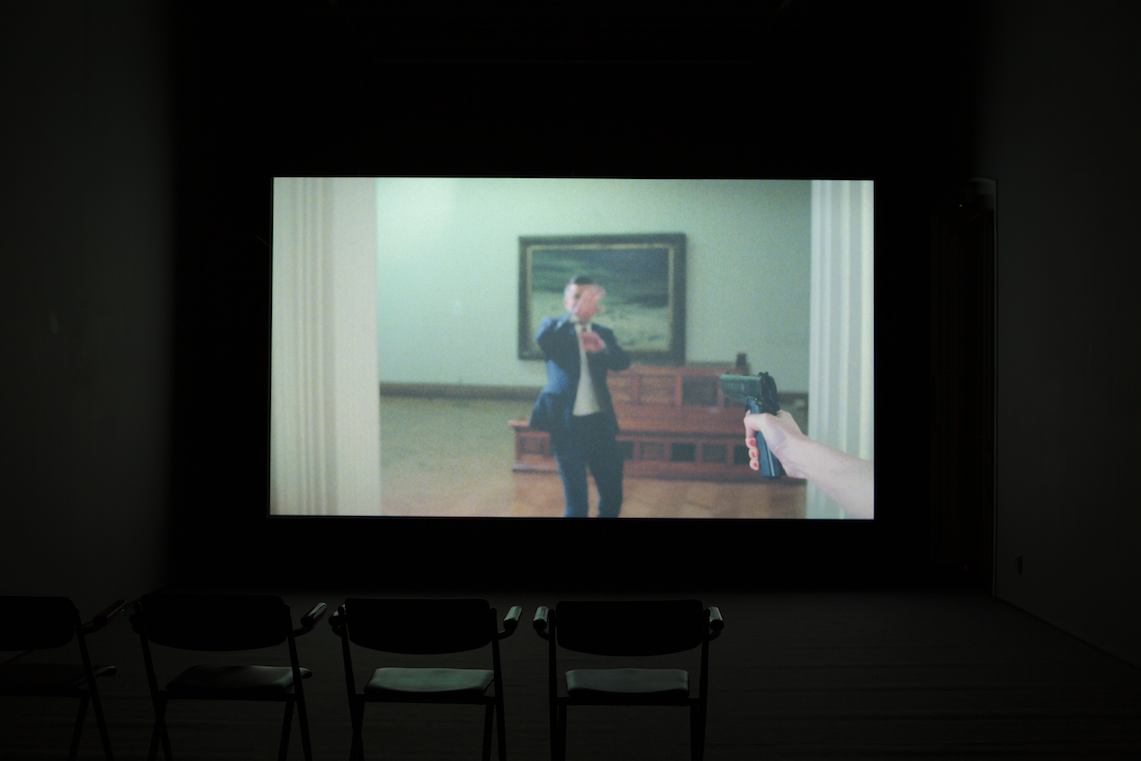
The first high-ceilinged hall (in neoclassical style) is attained by means of a palatial staircase. This antechamber is dominated by a large screen but it’s a dominance tempered by the feeble glimmer from the windows lining the opposite wall. The atmosphere is unique and uniquely Tromsø. The film-projection is designed to operate in an unstable equipoise with the still weak, but gradually returning, arctic sun. As a regular film-goer I am struck by the important curatorial dimension to the film’s presentation and mediation, so far removed from the customs and conventions of the specialised ‘viewing theatre.’
The grainy black and white film flickers away in silence in a setting of grainy twilight, which in its own way can sap the world of its sharp lines or colour. The effect is of entering into one rudimentary magic lantern in order to peer inside still another. We Are Not Like Them is a work inviting gradual discovery. The pacing is mesmerizingly slow – an invitation to mental reflection or, for that matter, wandering.
The understated plot provides the barest ghost of a structure around which the images revolve. You may (or may not) uncover this plot, having wondered about the one individual who, one soon realises, keeps popping up in the succession of urban settings. He is pensive, restless, bored, waiting, and always carrying a book. It turns out to be the same book in a succession of different translations, the dystopian novel We by Russian author Yevgeny Zamyatin, first published in English in 1924.
The self-conscious invocation of cinematic conventions suggests this is a a film made by a film aficionado. There will be no submission to such conventions, however. Thus Clarke creates effects and associated expectations only to disrupt and disturb them, for example by then invoking a set of conventions and expectations of an entirely different order. Hence, one is likely to begin with the sense of observing a documentary but then one individual perceived initially as part of the documented scenery soon begins to appear to us in a different light.
Then the whole meaning of our observations seems to demand reinterpretation, transforming our sense of the kind of film we are watching. The way this individual readily blends into the scenery is no longer the signature of fly-on-the-wall documentation, but that of his own dramatic persona. He is clearly a sort of spy and, on another level, he is therefore also a sort of actor. Indeed, he embodies a bundle of roles. The actor plays an agent playing an ordinary ‘bystander.’ Upon further investigation we discover it is also the filmmaker himself assuming the role of the actor.


What story is told here? For there is a story of sorts, though quite unlike most stories you will encounter inside a cinema. It is a story of futile efforts and the eventual lassitude, which futility brings. The protagonist’s received instructions can never be followed, for time after time his contact fails to appear.
In the meantime, we observe some compelling imagery of the various locations with their idle, melancholy industrial plants and half-deserted cityscapes. From Britain to Poland we are struck by a surprising uniformity. Narratively they provide a descant to the principal refrain of cold-war intrigue with its relentless othering. They emphasise the unity of a ‘We’ that is rationalist but dystopian. There is a double futility here, on the one hand, of how we constitute ourselves as enemies to facilitate a ceaseless, pointless struggle, each antagonist the ironic mirror-image of the other, and, on the other, of what we have shared, a hive of activity, now entering its twilight – and to what end?
The factories and apartment-blocks loom in a faded glory continually framed by natural elements. These are suggestive of an elemental force to which the manmade structures are destined to submit. There is moss between the paving-stones, and the grass and trees seem to be enfolding these grand human constructions in the slow but remorseless process of returning them to the dust from whence they came. The grainy film itself takes on the quality of a crumbling artefact from another age, a grim reportage from a medium and a subject that have both seen better days.
The sense of the hubris and disappointment of human endeavour in the face of the power and grandeur of nature is underscored by the visual parallels. Factory and spy alike are immobilised, caught up in a web of existence from which there is no escape, all ingenuity and heroic aspiration notwithstanding. It is a familiar theme in Western culture, from the fiction of Joseph Conrad to the philosophy of Hannah Arendt: the pathos of mortal human existence in the face of the daunting weal of an unyielding and unforgiving natural universe.
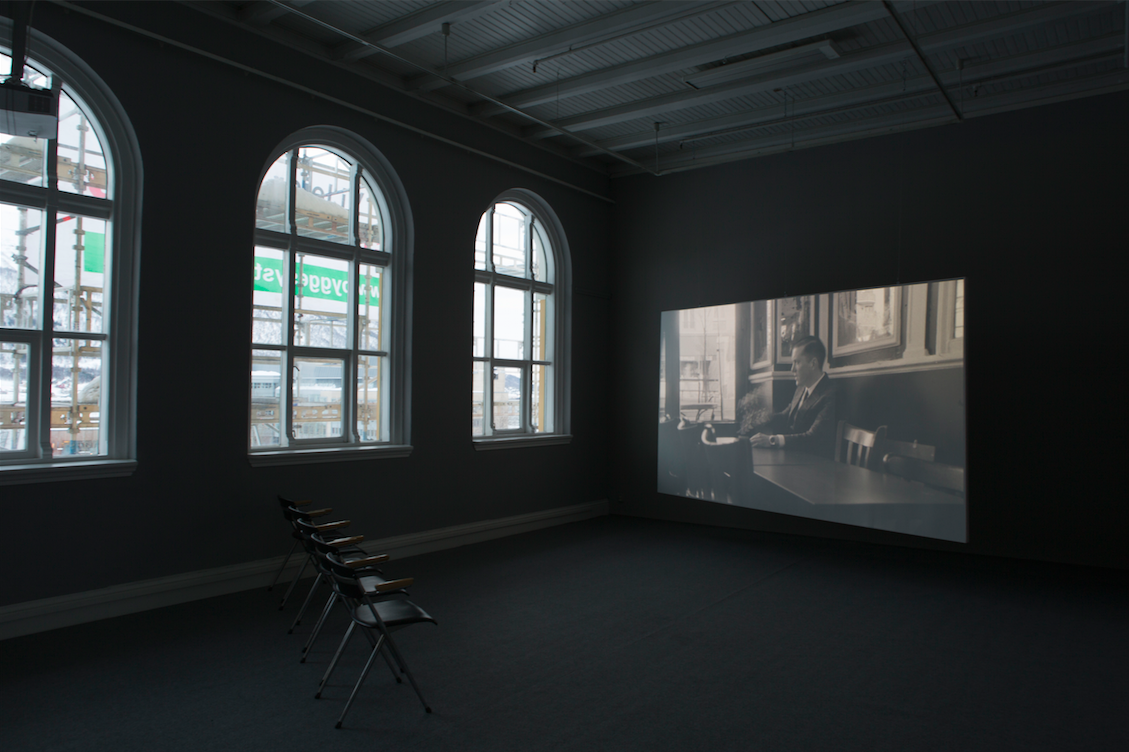
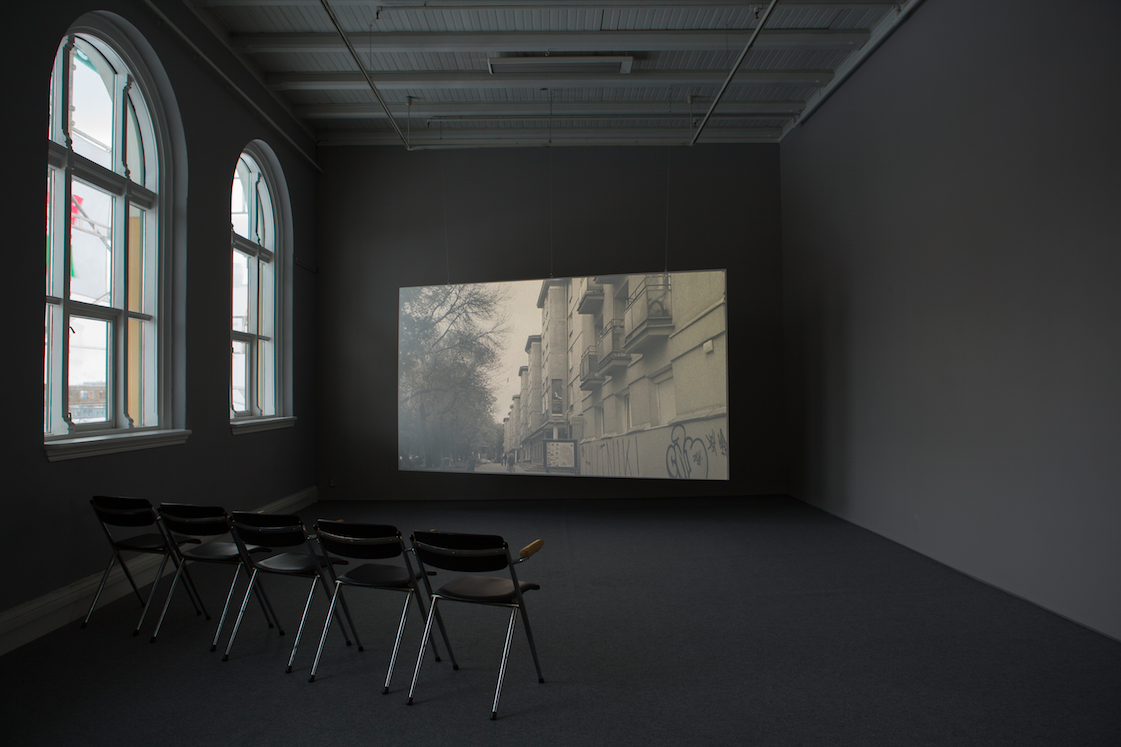
The most telling effect of the film is that of mood. It is the evocative properties of the medium that Clarke exploits to their utmost. The longer one lingers with the images, the more one is drawn into a melancholy atmosphere and even a kind of diffuse nostalgia for memories or times that just elude recollection. In this way, the film has the potential to affect us bodily as a means to stimulate a reappraisal of some of our most habituated assumptions and perspectives – regarding the cold war for example. It may even prompt something so profound as a reappraisal of the whole meaning and import of our civilisation.
The stimulus to reflection – and even rethinking – through the creation of a kind of emotional atmosphere is what ties the three films together stylistically. In a way, Clarke is using film to project back on ourselves, that is, on our own unconscious misgivings, regrets and disappointments. Perhaps by bringing these to the surface we discover new grounds for questioning explicitly the veneer of conventional conformity and self-satisfaction – the very cultural machinery of our social order.
The most striking feature of the second film, The Most Cruel of All Goddesses, is nevertheless the way it pointedly departs from the model of the first: by introducing sound. The work is also presented more ‘cinematically.’ We pass into a darkened inner sanctum, protected from light-pollution by a heavy curtain. The experience is almost fairground-like, as though an entré to some hidden, exclusive diversion, a fortune-teller, perhaps, or some freak of nature. The fairground, it turns out, is a central motif of the film we are about to see.
The ‘plot’ resembles the previous one, but this time we are left in little doubt about the nature of the protagonist. It even appears to be the same secret agent, embarking with admirable fortitude on his next mission. There are important differences, however. We Are Not Like Them is terribly Waiting for Godot. The Most Cruel of All Goddesses, in its paranoid atmosphere – and liberal use of the conventions of the ‘noir’ thriller – is much more Kafka (as in The Trial).
Existential angst takes precedence over dramatic tension, however. The latter, such as it is, is continually diffused by the leisurely pacing and the long, lingering shots. The agent is compelled (‘for reasons unknown’) to investigate the life and legacy of that socialist icon, Friedrich Engels. Is the hero’s surreal and ominous encounter with what would appear to be East European gangsters a metaphor for The Left’s flirtation with the false promise of Soviet communism?
I was particularly struck by the use of sound. There is no music, not even during the credits (a deliberate and perhaps requisite nose-thumbing at one of the most sacrosanct of all filmic conventions) and practically no dialogue. The film, like its predecessor, is above all powerfully visual. Its ambient aural backdrop complements the imagery without ever occupying the work’s central affective space. Nevertheless, the use of sound makes an important contribution to the film’s atmosphere and mood.
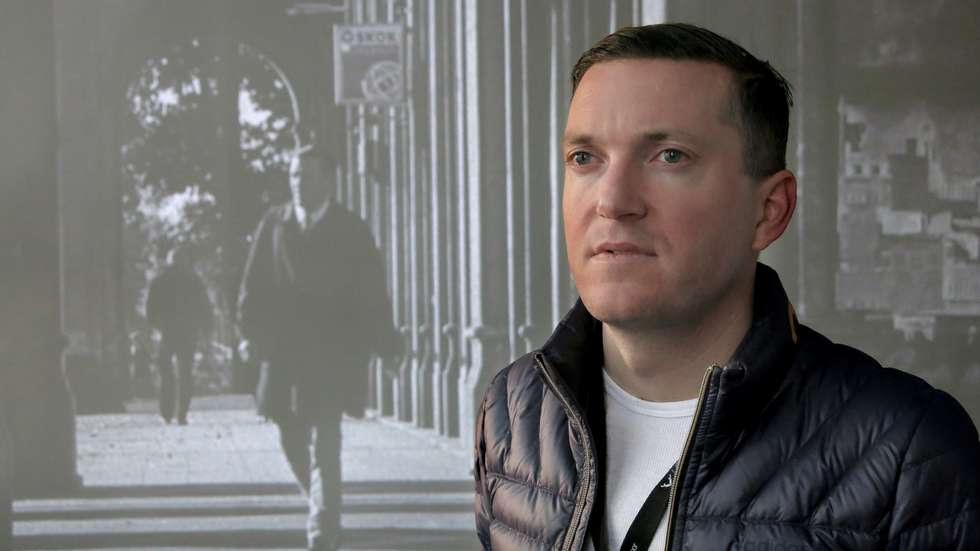
If a dream can be realistically evoked, then we can say that the ambient sounds, be they muted cries, birdcall or traffic, achieve a kind of realism. The experience is like lying on a beach with eyes closed in a kind of alpha (or half-conscious) state. In this way the dreamlike quality of the black and white imagery and loose associative plot is enhanced. Grainy, muted image is matched by muted sound, creating a distancing and a very real sense of dreamlike unreality.
One ingeniously referential moment is worthy of special mention. Friedrich Engels himself suddenly appears to the protagonist in some sort of drunken hallucination. The shock of the encounter is emphasised by a momentary switch to colour stock. This can only be a reference to the most famous breach of black and white by colour in the history of cinema, where Dorothy leaves monochrome Kansas behind for the glorious and literal Technicolor of the Land of Oz. Once more we are enticed by an allusion to forge new connections and reference-points for our experiences and our history. The ‘wizard’ of Victor Fleming’s The Wizard of Oz (1939) turned out to be a charlatan, his wizardry (and, in a way, his whole ‘kingdom’) an elaborate hoax.
In the final part of the trilogy, Wreckage in May, colour film actually prevails as the medium of choice, perhaps reflecting the demands of the scene of most of the action – an art gallery. The self-referentiality of the work gives it an ironical tinge. We find ourselves in a gallery watching a film about a gallery. This is the most action-packed of the three – at the risk of overstating the case – and yet it is littered with lingering shots of a veritable litany of still images, the rich, colourful paintings of various French impressionists.
There is a small, paradoxical but strong current of still imagery running through the history of cinema. There is some mysterious allure to the frozen moment as the introduction of an unexpected and unlikely bulwark against the stream of moving pictures. Two of the best examples in ‘conventional’ cinema would have to be Michelangelo Antonioni’s Blow-Up, from 1966, and Wayne Wang and Paul Auster’s Smoke, from 1995.


In Blow-Up the stills in the photographer’s studio are studied in an atmosphere of intense concentration and anxiety. Some important detail the photographer (and we the audience) missed at the time materialises ominously, like a ghost, from the capture of a half-hidden instant: mysterious, concrete yet ephemeral, and perhaps dangerous. In its emotional register, Smoke represents an even more powerful use of the still, whereby an accident of documentation is the stimulus to the most painful sense of loss.
In Wreckage in May the paintings move continually in and out of focus. We observe and then discover we are not alone, and then that even the observer herself is observed. The culprit is none other than our ubiquitous and hapless secret agent. Brought into metaphorical focus is the way the meaning of an object is subject to the way it is observed – and shared. The paintings evoke conflicting feelings of romantic longing and impending doom, connected – obscurely – with the utopian aspirations of the short-lived Paris Commune and, of course, its tragic demise in the May of 1871.
There is much to learn (and to ponder) from the slow, referential pageant of Clarke’s work. He shreds film of its customary narrative discipline and unlocks a dream-like power of reference and association, reminiscent of another exponent of the ‘gallery film,’ Ben Rivers. The best theatrical filmmakers are no strangers to such powers but the relative freedom from idiom and convention allows the exploration of what film can do in a way perhaps unique to the gallery.
Just as Clarke is able to learn from and draw upon theatrical practices, conventional filmmakers could probably do more by way of reciprocation. There is food for thought and a source of inspiration here for anyone attempting to push the boundaries of their art, for those less concerned about context or idiom, and more about the quest to achieve something sublime, something unconditionally good, irrespective of category, tradition or genre.

What the self-conscious art-film promises to deliver cannot be taken for granted, however. Its liberation from the dictates of craft all too often results in no more than a sad parody of the form, rather than its informed interrogation – let alone transcendence. The relative autonomy of the gallery-orientated medium is its virtue but also its vice. There are dangers, ironically enough, in the temptation to situate oneself too self-consciously in opposition to the mainstream.
Conventions at their worst can render film tired and formulaic, but we may paradoxically fall into a new trap in the very act of opposing them. The danger lies in establishing a set of ‘anti-conventions,’ which can be as formulaic and tired as the practices they reject. The common minimalism to which so many art-films gravitate reflects a twofold attraction. Not least are the financial constraints encouraging the adoption of a minimalist aesthetic. The rationale, however, is more likely to be the wish to strike out on a new path, to oppose and invert the sensual profligacy embraced by the mainstream. Movie conventions thus come to be referenced through their absences or inversions. The danger is that these become tired and predictable idioms in their own right, equally capable of stifling the creative potential of the medium.
Clarke is not immune to such pitfalls. He observes, for example, the perfect symmetry of opposition in the approach to movie credits. Just as surely as the band will start playing the moment the credits begin to roll in the conventional film, the band will be conspicuous by its silence in the ‘alternative’ variety. Clarke’s choice in this regard is arguably the predictable outcome of conforming too readily to ‘the silence of the credits’ as a kind of anti-convention.
Consider the muted drama figuring in various ways in the three films. This is effective in its distancing effect, which creates a kind of space for reflection, but it also risks becoming predictable. There is a moment in Wreckage in May, for example, when the spy is interrupted in the act of searching his quarry’s house and is compelled to hide in the bathtub. A shower-curtain is his only shield against discovery. Drama’s power to please hinges on the suspense induced by a measure of uncertainty over an outcome with significant consequences – for good or ill. Why was I – the viewer – not pleased in this instance? There seemed so little chance of discovery, as this would violate the principle – the anti-convention – of ‘dramatic muting.’

Flaws aside, there is much to admire here. There is a sophisticated layering to Clarke’s work, and here we could use a perfect movie analogy. The Geist Trilogy is like Shrek – in perhaps one sense only. It recalls the character Shrek when he compares himself to an onion. Clarke’s work, like the loveable ogre, has layers. It takes time to peel them away, but if one takes the trouble (and it’s not made easy for you), there is always something else to observe a little deeper below the surface. Here’s one more example…
One of the virtues of the work is its seriousness and intensity. As both director and lead, Clarke maintains this at all times, and yet there is a subtle irony in evidence here too, a self-referential joke, and an ironically exclusive one, since it can only be appreciated with a major investment of time (and attention) in all three films. Collectively they present the central character and, by implication, the filmmaker himself, as an abject creature and figure of ridicule – contempt even. The contempt (especially physical) with which the character is repeatedly treated, suggests an ironical self-contempt expressed by the filmmaker through the action he has portrayed.
Clarke’s work, like the gallery in which it is found, is a mixed blessing. The concept of high culture liberates the filmmaker and opens up new possibilities, but one man’s freedom is another man’s license, in the sense of taking unwarranted liberties. There is a reassuring element of democracy in the collective responses and judgements of a theatre audience. Here in the gallery it seems we wander alone at the mercy of the combined ministrations of filmmaker and curator. Do they really care about us? Has Clarke been attentive enough to the task of really reaching us?
There are 101 ways to skim off the surface of his work and leave with little to show for the effort – however half-hearted this may have been. On the other hand, artists and craftspeople of all kinds are continually implored to think about their audience, usually understood in neoliberal terms as one or another niche market. Thus, it’s a thin line between sensitivity to audience and reducing one’s art to the formulas of effective marketing. This raises the question of what art is for (not what it is, which is nearly always the wrong question)? What does it (or should it) set out to achieve?
Do you, the artist, try to say something clever in the hope of pleasing as many people as possible, or do you say something clever precisely with the expectation – and even aspiration – that almost nobody will actually get it? The point is that art reaches out to someone, who or how many, or where they will be sitting, or wandering, is really beside the point.